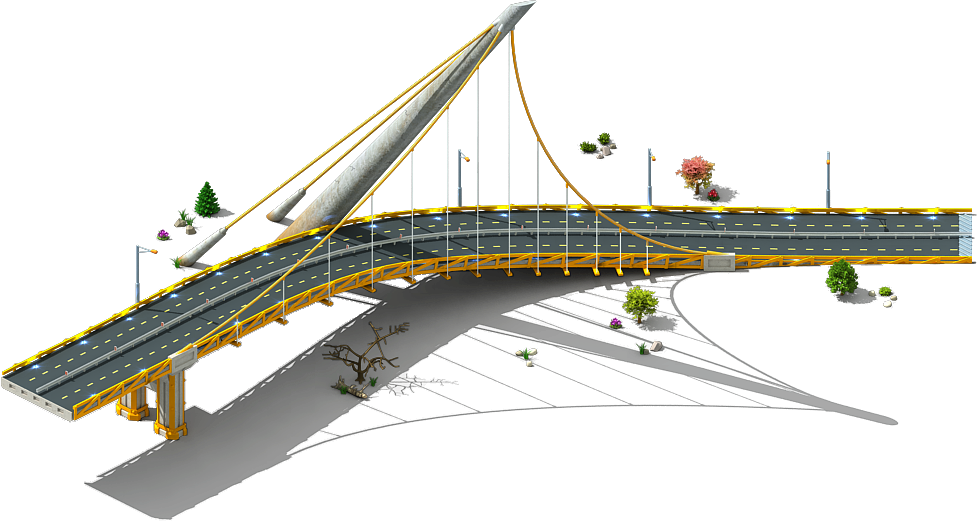In order to transfer people and commodities across lakes, valleys, and other difficult terrains, bridges are a crucial part of the transportation system. The long-term performance and safety of a bridge cannot be guaranteed by simply planning and building it. To avoid early deterioration, corrosion, fatigue, and other types of damage that might jeopardise structural integrity and pose a risk to users, proper detailing of bridge components is crucial.
We shall explore what bridge detailing is, why it is important, and how it is carried out in this article. We'll go over the essential elements of a bridge and talk about the various detailing techniques applied to each. In order to ensure the long-term reliability and safety of bridges, we will also look at the opportunities and challenges given by new technologies and materials, as well as the significance of cooperation between design teams, builders, and maintenance teams.
What Is Bridge Detailing and How Do I Understand It?
The process of describing the design specifics and manufacturing needs for the various bridge components, such as beams, girders, trusses, decks, piers, abutments, and foundations, is referred to as "bridge detailing." To resist the pressures and stresses brought on by traffic, wind, seismic events, temperature variations, moisture, and other environmental conditions, each component must be suitably designed, formed, connected, and protected.
Why Is Bridge Detailing Important?
Bridge detailing plays a crucial role in ensuring the safety, functionality, and longevity of bridges. By specifying the right details and fabrication methods, designers and contractors can:
Minimize the risk of structural failure, collapse, or deformation
Prevent premature deterioration, corrosion, fatigue, and other forms of damage
Enhance the durability, aesthetics, and sustainability of the bridge
Reduce the cost and time of construction and maintenance
Meet the regulatory and industry standards for bridge design and construction
Bridge Components and Detailing Methods
Bridge detailing involves a wide range of components and methods, depending on the type, size, location, and purpose of the bridge. Here are some of the main components and detailing methods used for them:
Beams and Girders:
Beams and girders are the main load-carrying components of a bridge, supporting the deck and distributing the traffic loads to the piers and abutments. Detailing of beams and girders includes the following:
Type, size, and shape of the section
Material properties and grades
Cross-sectional dimensions, such as depth, width, and flange thickness
Web and flange stiffeners and connection details
Welding, bolted, or riveted connections
Corrosion protection, such as coatings, paints, or galvanizing
Trusses:
Trusses are structural frames consisting of interconnected triangles, used for long-span and high-load bridges. Detailing of trusses includes the following:
Type, size, and shape of the section
Member properties and grades
Diagonal and vertical members, chords, and connections
Cross-bracing and wind bracing
Welding, bolted, or riveted connections
Corrosion protection, such as coatings, paints, or galvanizing
Decks:
Decks are the roadway surface of a bridge, providing a smooth and safe driving surface for vehicles and pedestrians. Detailing of decks includes the following:
Type, size, and shape of the deck
Material properties and grades, such as concrete, steel, or composite
Thickness and reinforcement details
Expansion and contraction joints
Drainage and waterproofing systems
Skew and curvature details
Challenges and Opportunities in Bridge Detailing:
Bridge detailing is not without its challenges, as designers and contractors have to balance multiple factors, such as safety, functionality, durability, aesthetics, and cost-effectiveness. Moreover, new technologies and materials are constantly emerging, presenting both opportunities and challenges for bridge detailing.
For example, the use of high-performance materials, such as fiber-reinforced polymers (FRP), can enhance the durability and corrosion resistance of bridge Detailing components, but requires new detailing methods and fabrication techniques. Similarly, the integration of sensors, monitoring systems, and data analytics can improve the maintenance and safety of bridges, but also requires new standards and protocols for detailing and implementation.
To address these challenges and leverage these opportunities, collaboration and communication among stakeholders are crucial. Designers, contractors, maintenance teams, regulators, and users need to work together to ensure that the detailing of bridges meets the highest standards of safety, sustainability, and innovation.
Conclusion:
A essential part of bridge design and construction, bridge detailing ensures the durability, usability, and safety of bridges. By specifying the appropriate details and fabrication methods for the various components of a bridge, designers and builders can lower the risk of structural failure, halt premature deterioration, improve the aesthetics and sustainability of the bridge, and comply with legal requirements and industry standards for bridge design and construction.


